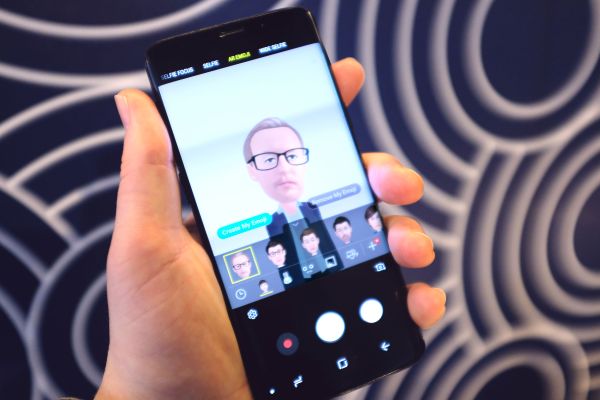We’ve known for a while that Samsung’s been planning an Animoji competitor for its latest handset. Now that we’ve actually seen (the admittedly clunkily named) AR Emoji in action, we can testify to the fact that it’s some combination of compelling and creepy.
That last part first. Like the iPhone X, the Galaxy S9 takes advantage of its on-board face scanning technology to offer up an animated emoji that corresponds to the user’s facial movements, so you can send animated messages, sing cartoon character karaoke and the like. But, as is Samsung’s wont, the phone takes things an extra step, mapping more than 100 points in the user’s face and building a 3D avatar.

Once the scan is complete, users can customize it from a selection of hair styles, clothes, glasses and the like, before firmly taking up residence in the uncanny valley. The custom AR Emoji isn’t as adorable as Apple’s animals or benign as Nintendo’s Mii avatars. Instead, it straddles that uncomfortable line between cartoon and realistic 3D scan a bit uncomfortably.
It’s first generation, of course, and I’d expect that the company should smooth that line out a bit by the time the Galaxy S10 or even the new Note rolls around. For now, however, it’s a little uncomfortably creepy for my own taste. There’s good news on that front, however. The company’s offering up some default cartoon options — including a rabbit that’s a bit more anthropomorphic than Apple’s offering.

But Samsung’s got one big secret weapon on its side. The company no doubt ruffled some feathers at Apple’s big glass spaceship today when it announced a partnership with Disney, bringing the entertainment goliath’s beloved cartoon characters to its emoji offering. The company’s bringing Mickey, Minnie and the Pixar’s Incredibles to the mix.
It seems like a bit of a curveball that Disney opted to partner with Samsung, rather than Apple this time out — after all, the two companies have worked together in the past on things like the Mickey Mouse watch face. And of course, there’s been a fair amount of executive overlap between the two companies, between Steve Jobs’ involvement with Pixar and the fact that Robert Iger currently sits on Apple’s board.
Of course, those sorts of things aren’t a guaranteed promise of partnership, and Disney looks like it’s not trying to play favorites with content partnership. Take, for example, the media company’s licensing of Star Wars content for AR stickers on the Pixel 2.
